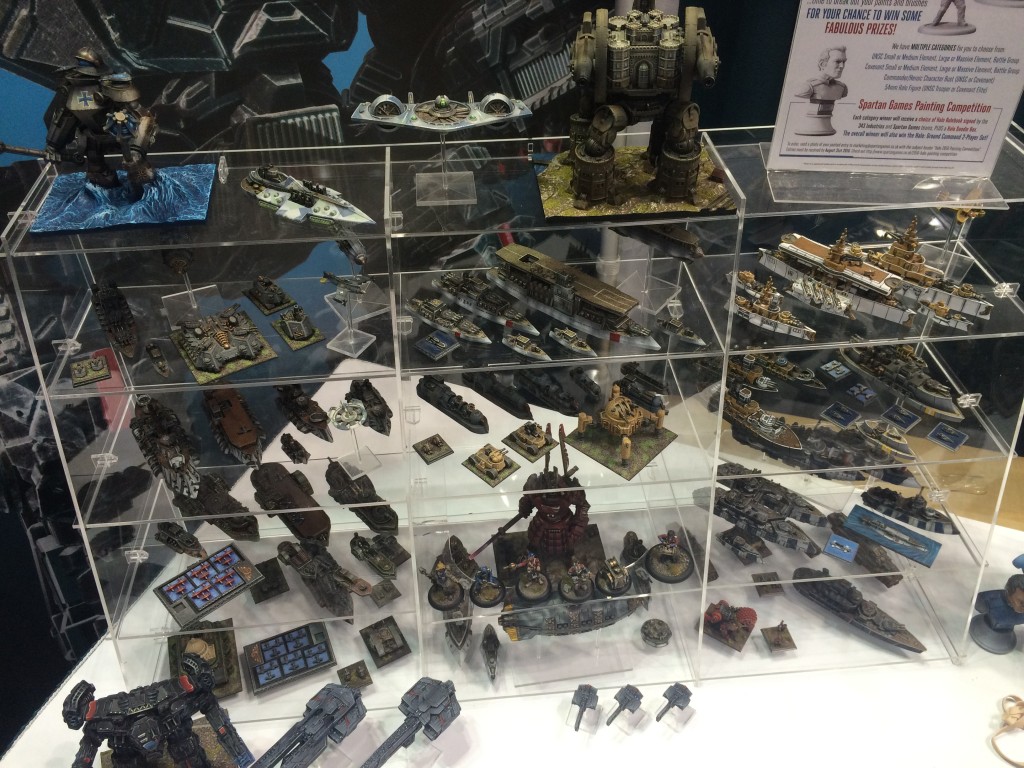2015-2017 In Review
When I think back to this period, I remember feeling at the time that Spartan had abandoned Dystopian Wars in favor of its myriad side-projects. Going back over the release history for that period, I am forced to reconsider that position somewhat. While it is definitely true that the pace of Dystopian Wars releases drastically slowed down during this time period, especially in 2016 and 2017, it is not true that they stopped completely. The problem seemed to be that the releases that were getting made just weren’t resonating with the fan base. Unfortunately, at the same time that playerbase was under increasing temptation to jump ship to other games, both those that Spartan produced and those from competing companies. On the Spartan side, while the company had a loyal following (which included yours truly) the re-launch of Firestorm Armada, then the launch of Planetfall, Halo Fleet Battles, and Halo Ground Command in quick succession made it hard for us fans to keep up.

Spartan was already perceived as a company that tended to leave its existing games in limbo while it pursued other projects, but the last few years of the company’s life cemented that reputation. In addition to stressing the wallets of its existing fans, Spartan’s rapid game launch strategy also tended to turn off new players (in my personal experience). I do have to give the company credit for conducting its surveys in the fall of 2016, and actually acting on the results. However, it seems it was too little, too late.
Bad Finances and Kickstarter
Obviously, Spartan was financially troubled. Without access to written recoreds or interviews with Neil Fawcett or others in his company, it is impossible to say just how and where those troubles started; at the very latest, they seemed to have hit full-force by the spring and early summer of 2017. Knowing how the story ends, it’s almost painfully obvious how the many DW bundle deals and the pre-order hype for Operation North Star that were being pushed at this time were part of a last-ditch attempt to boost sales for the company. As for the Kickstarter itself, we will never know if it would have been able to reverse the fortunes of both DW and Spartan. I could probably write an entire post just on the campaign (hmmmm…note to self!), but I can honestly say that I was very excited by the new models spartan was previewing, and was eagerly awaiting the delivery of my pledge when I got the heart-breaking news the company had gone under. If the Kickstarter was going to sustain that excitement, Spartan would have had to put out more releases for the game in the months following the delivery of the Kickstarter. Operation North Star would have been a decent start on that!
Conclusion
In the end, Dystopian Wars has been an enduring presence in the gaming market. The potent combination of imaginative background, fun (if not always streamlined) rules, and amazing model designs captured the imagination of many a gamer. The demise of Spartan games and the resultant hiatus for DW has been keenly felt by all of us who found the setting so fascinating. Only time will tell if Warcradle will be able to pick up the mantle that Spartan has left on the ground!

Great recap. Thanks for putting it together.
I’d spoken and worked with Neil and company on the Firestorm Armada side in the few months before they shut down. I know that his health had contributed to a lot of the problems, just in not being able to commit all the time needed to run so many projects.